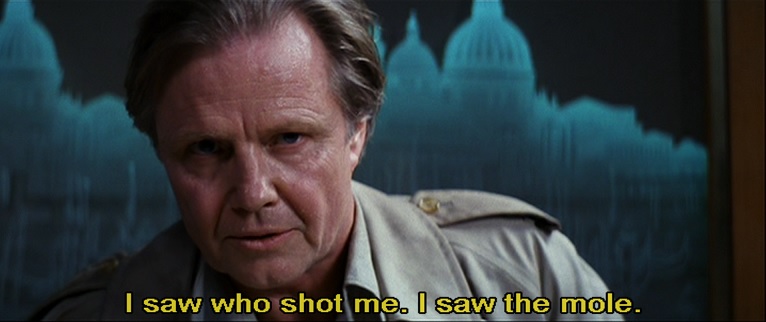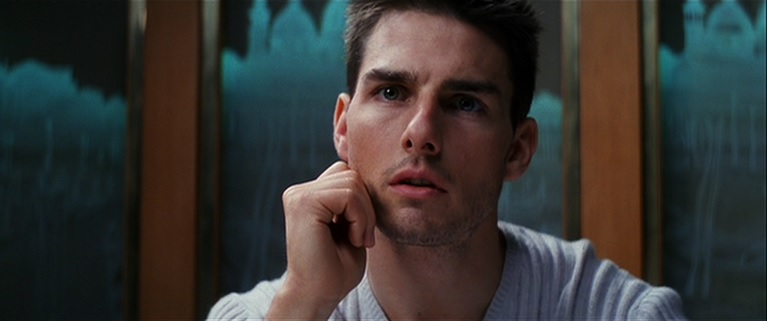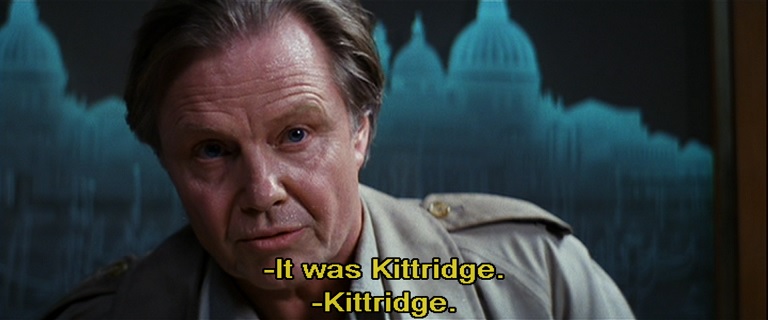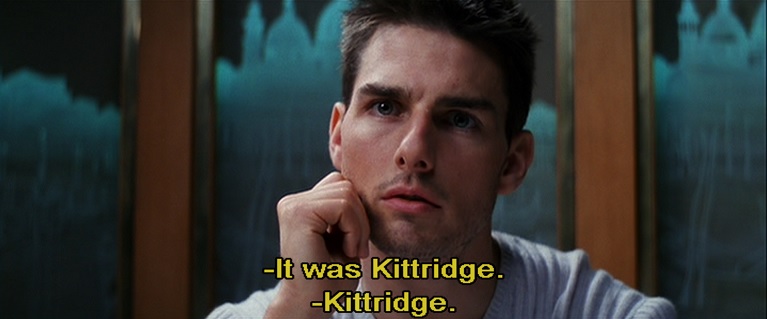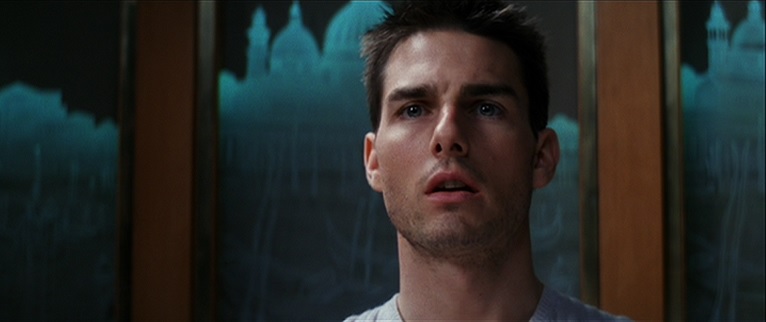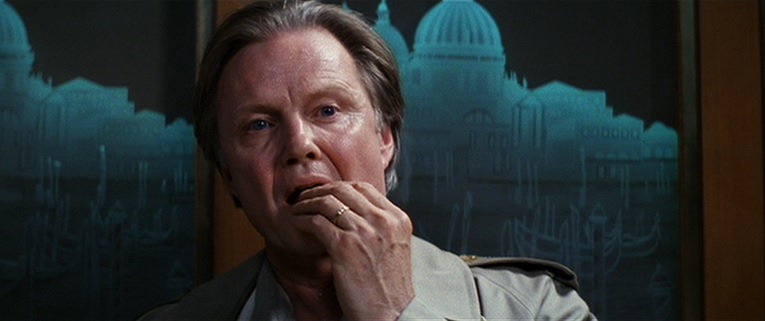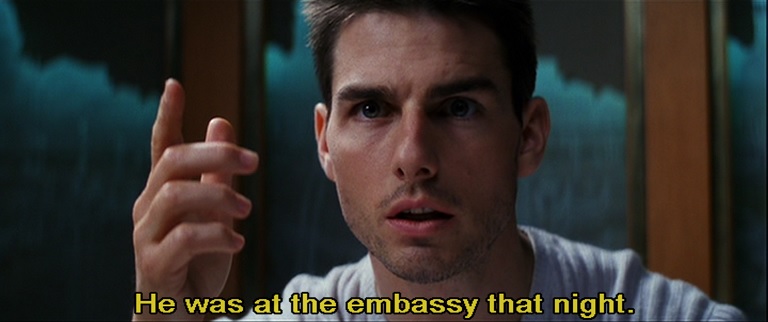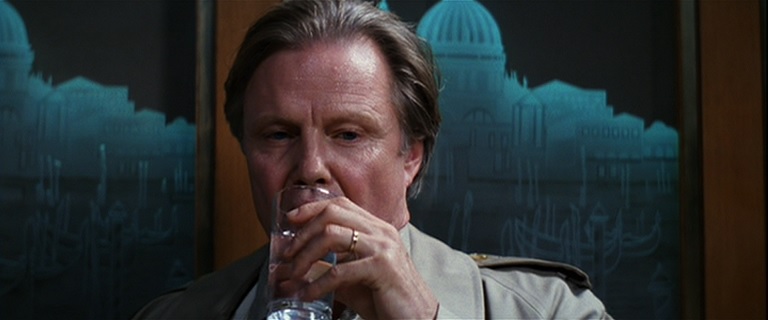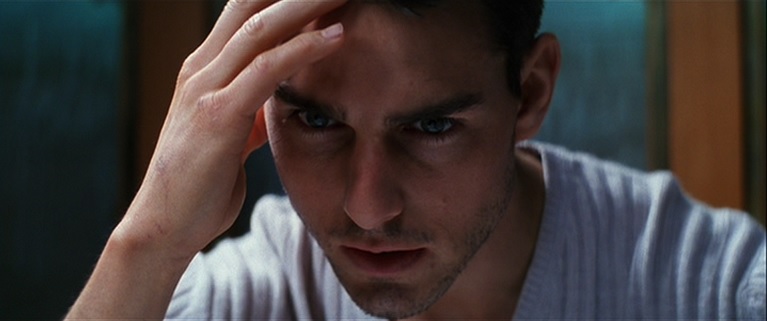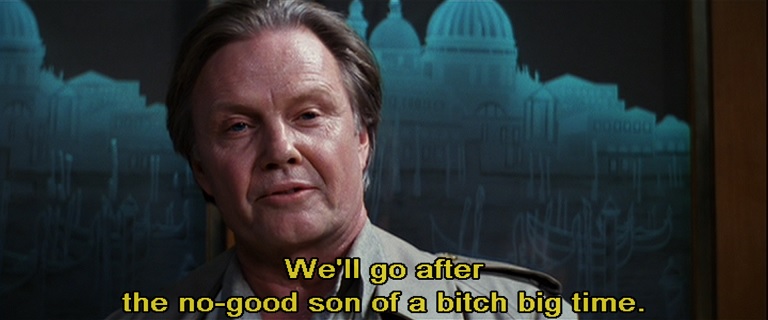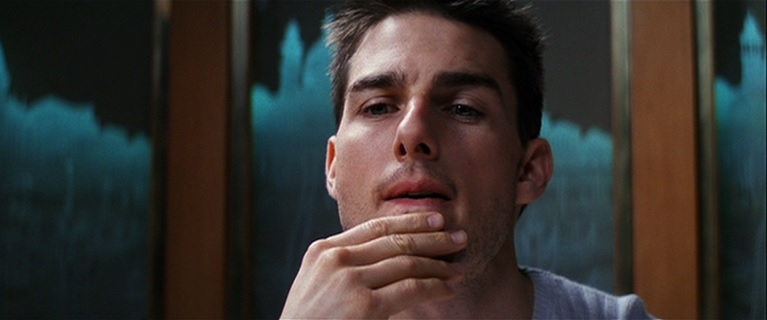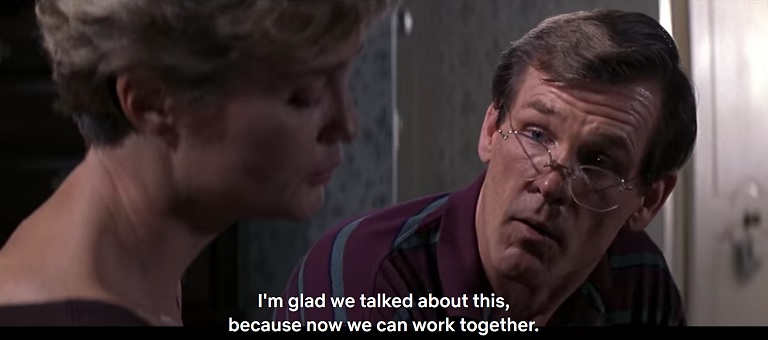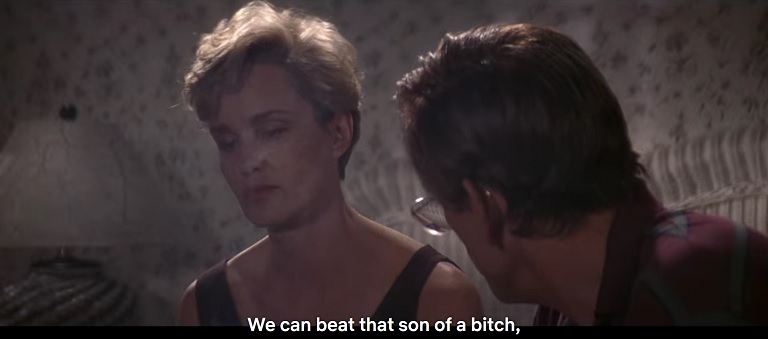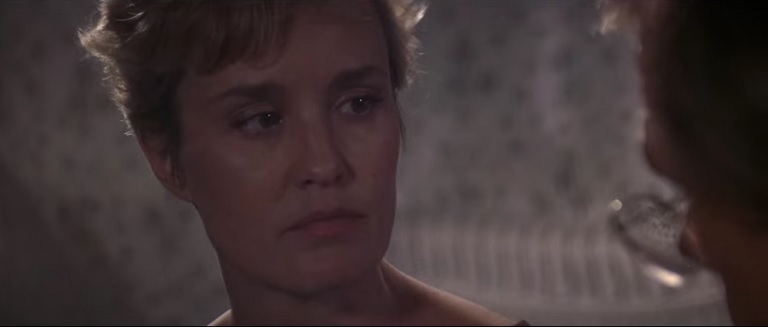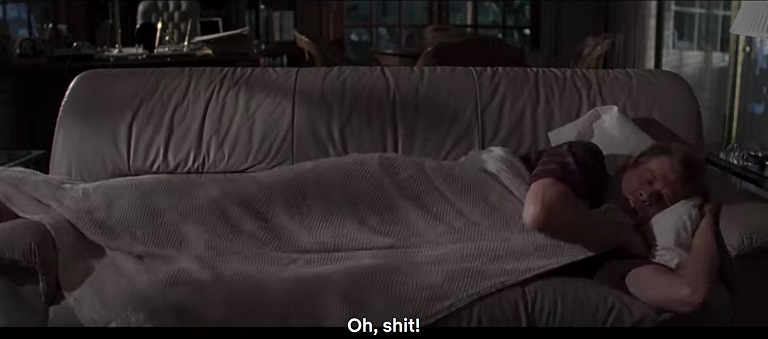FOR 25TH ANNIVERSARY, 3 DATES ONLY, MAY 16TH, 17TH, 19TH VIA FATHOM EVENTS
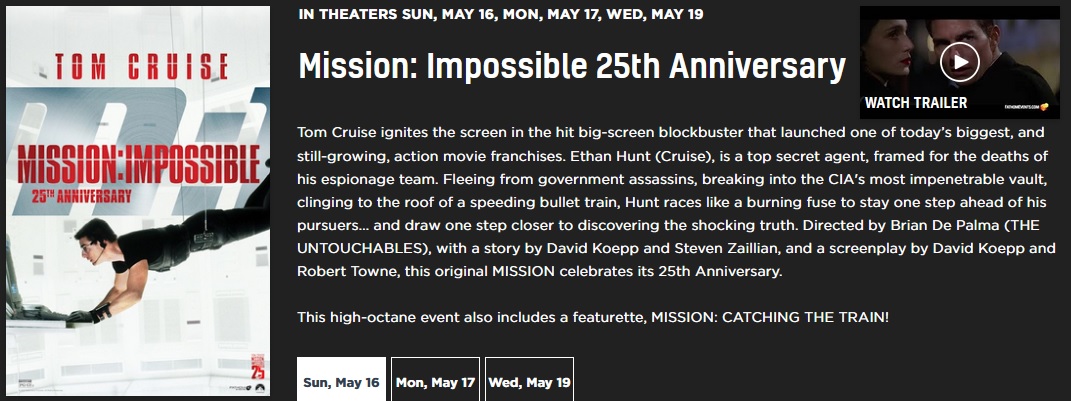
 Hello and welcome to the unofficial Brian De Palma website. Here is the latest news: |
|---|
E-mail
Geoffsongs@aol.com
-------------
Recent Headlines
a la Mod:
Listen to
Donaggio's full score
for Domino online
De Palma/Lehman
rapport at work
in Snakes
De Palma/Lehman
next novel is Terry
De Palma developing
Catch And Kill,
"a horror movie
based on real things
that have happened
in the news"
Supercut video
of De Palma's films
edited by Carl Rodrigue
Washington Post
review of Keesey book
-------------
Exclusive Passion
Interviews:
Brian De Palma
Karoline Herfurth
Leila Rozario
------------
------------
| « | April 2021 | » | ||||
| S | M | T | W | T | F | S |
| 1 | 2 | 3 | ||||
| 4 | 5 | 6 | 7 | 8 | 9 | 10 |
| 11 | 12 | 13 | 14 | 15 | 16 | 17 |
| 18 | 19 | 20 | 21 | 22 | 23 | 24 |
| 25 | 26 | 27 | 28 | 29 | 30 | |
De Palma interviewed
in Paris 2002
De Palma discusses
The Black Dahlia 2006

Enthusiasms...
Alfred Hitchcock
The Master Of Suspense
Sergio Leone
and the Infield
Fly Rule
The Filmmaker Who
Came In From The Cold
Jim Emerson on
Greetings & Hi, Mom!
Scarface: Make Way
For The Bad Guy
Deborah Shelton
Official Web Site
Welcome to the
Offices of Death Records
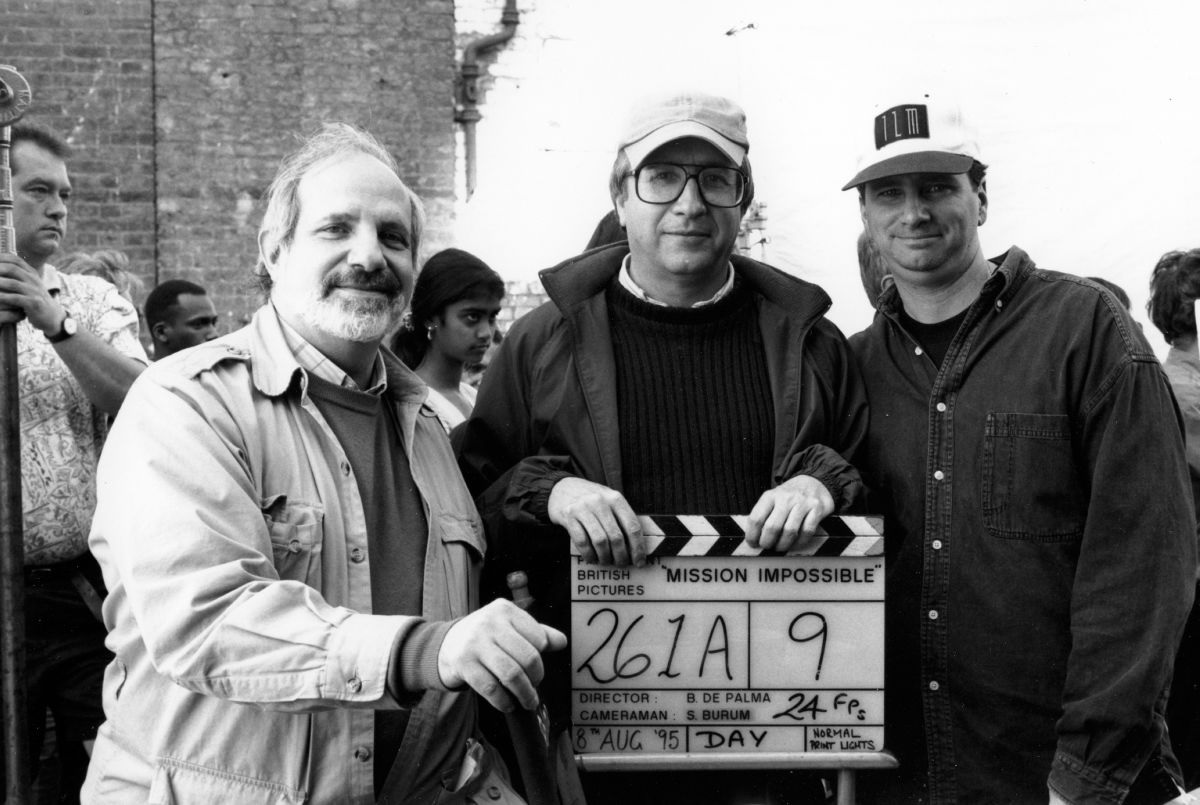
On the process of color timing, etc., with the answer print
In a small darkened projection room, two men sit and watch fragments of an action movie with no soundtrack. Beaming forth from the wide-format anamorphic screen beam are powerful images of Tom Cruise, Emmanuelle Béart, Jon Voight, Kristen Scott Thomas, Emilio Esteves, Vanessa Redgrave and Jean Reno. As the actors converse, struggle, or embrace in silence, their exclusive audience exchanges a few sparse comments: “Tom’s face is a little red.” “Emmanuelle needs more blue.”The setting for this scene is Deluxe Laboratories in Los Angeles, where Stephen H. Burum, ASC is finalizing of the answer print for Mission: Impossible with timer Denny McNeill.
After months of preparation and the frenetic production itself, the answer-print stage is a time of closure for many directors of photography, a period when they can sit back and appreciate their work. Burum likens the cinematographic process to “conducting a symphony orchestra: you’re so busy bringing in the violins, doing this and doing that, that you don’t have the real joy of listening to the music, of really feeling the music. And when you're timing and you get down to the third answer print, it hits you all of a sudden: you have the time to enjoy what you did. Until then, you just don’t.”
When timing a film, the cinematographer scrutinizes the color, brightness and quality of each individual shot, gauging its coherence against the surrounding shots in the sequence. The answer print is stricken directly from the negative; its set of yellow, cyan and magenta corrections are the foundation of an interpositive from which release prints will be produced, via the internegative. By the second or third release print, the major timing adjustments have been made, so the rest is merely a matter of fine-tuning. According to Burum, skin color is the clearest indicator for refining image quality and tone at that final stage.
“When you’re timing, you want to get a reference that will serve as a standard, so that the lab can clip it out and put it next to their timing machines,” he explains. “When there are major adjustments needed, you tend to say, ‘Let’s make it a whole lot more yellow or a lot more blue.’ Later you talk about skin tone a lot because it’s harder to define; it’s a very finicky and subtle hue.”
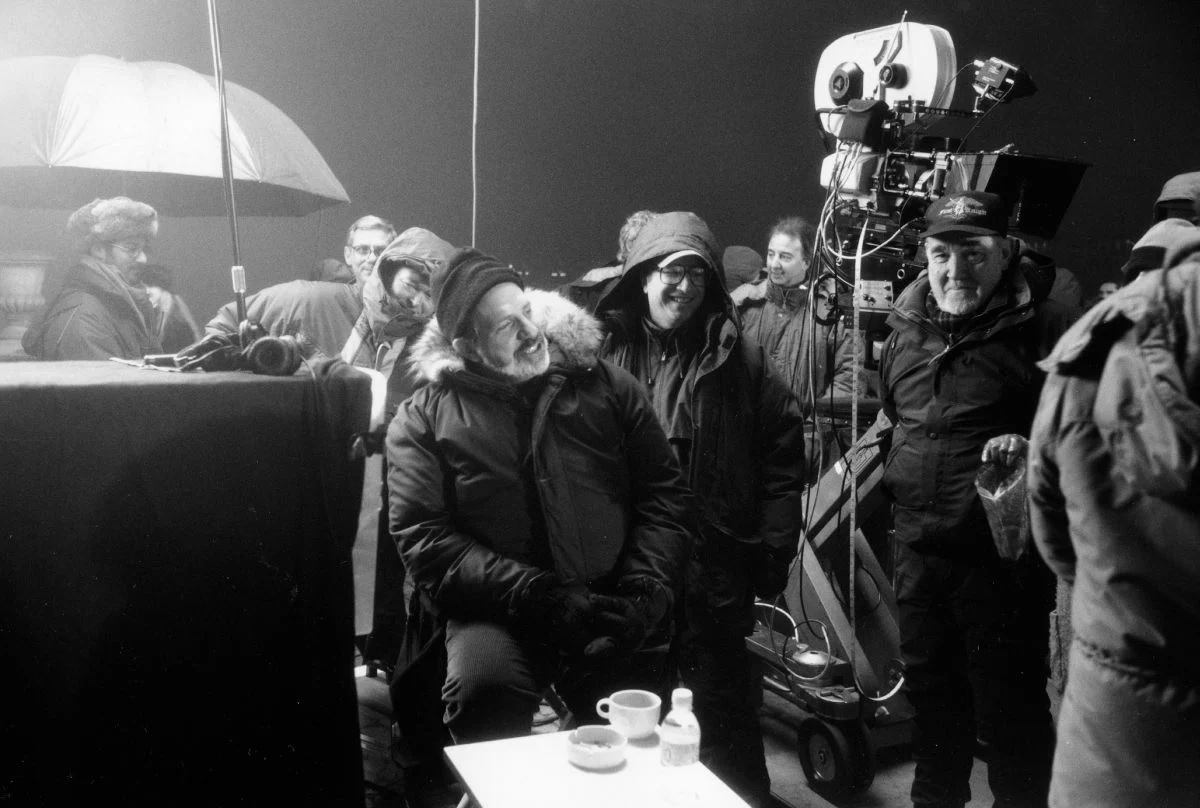
"De Palma left and right" -- On the collaborative working relationship between Burum and De Palma:
The feature film version is directed by Brian De Palma, whose relationship with Burum is well established.Over the past 12 years, the two filmmakers have collaborated on five previous features: Body Double, The Untouchables, Casualties of War, Raising Cain and Carlito’s Way. Both men share an encyclopedic knowledge of cinema and a passionate enthusiasm for filmmaking. The lengthy collaboration between the duo seems a natural one, as a keen appreciation of film history informs the work of both.
De Palma is best described as a postmodern director; his films are full of references to past directors such as Eisenstein, Hitchcock and Antonioni. He knows every storytelling trick in the book, and doesn't hesitate to use them. It is telling that Quentin Tarantino cites Blow Out (shot by Vilmos Zsigmond, ASC) as his favorite film, for in many ways, the young auteur is DePalma’s heir. Critics sometimes lambast the director as a mere maker of showy homages, yet, like Tarantino, he infuses his references to past films with a very contemporary irony that creates a personal vision.
In a very different way, Burum has used his own love of the classic Hollywood tradition to enrich recent American cinematography. A master stylist, Burum has on several occasions assimilated the aesthetics of bygone genres and transformed them into original and modern imagery. Witness the highly stylized rendering of detective serials in The Shadow, or the brilliant melange of film noir and comedy in The War of the Roses. Burum's distinguished career spans from the stunning second-unit cinematography on Apocalypse Now to his masterful, Academy Award-nominated work on Hoffa. In addition, he has received ASC Award nominations for both The War of the Roses and The Untouchables, winning for Hoffa.
After working with De Palma on so many pictures, Burum says that he and the director speak in shorthand on the set. “I love working with Brian. He’s the greatest; he knows exactly what he’s doing. There’s not much dialogue between us on the set. [The collaboration] is not artsy at all, but very matter-of-fact. I have an expression that I use: ‘De Palma left and right.’ If Brian says the frame ends at a certain point, it’s going to end there. There is no reason to shoot anything past that point.” Burum also understands De Palma on a personal level. To an outsider, he says, “Brian may seem gruff, but he keeps all of his feelings inside.” The cameraman realized this during the shooting of Al Pacino’s death scene in Carlito’s Way, when he saw the director “with tears in his eyes.”
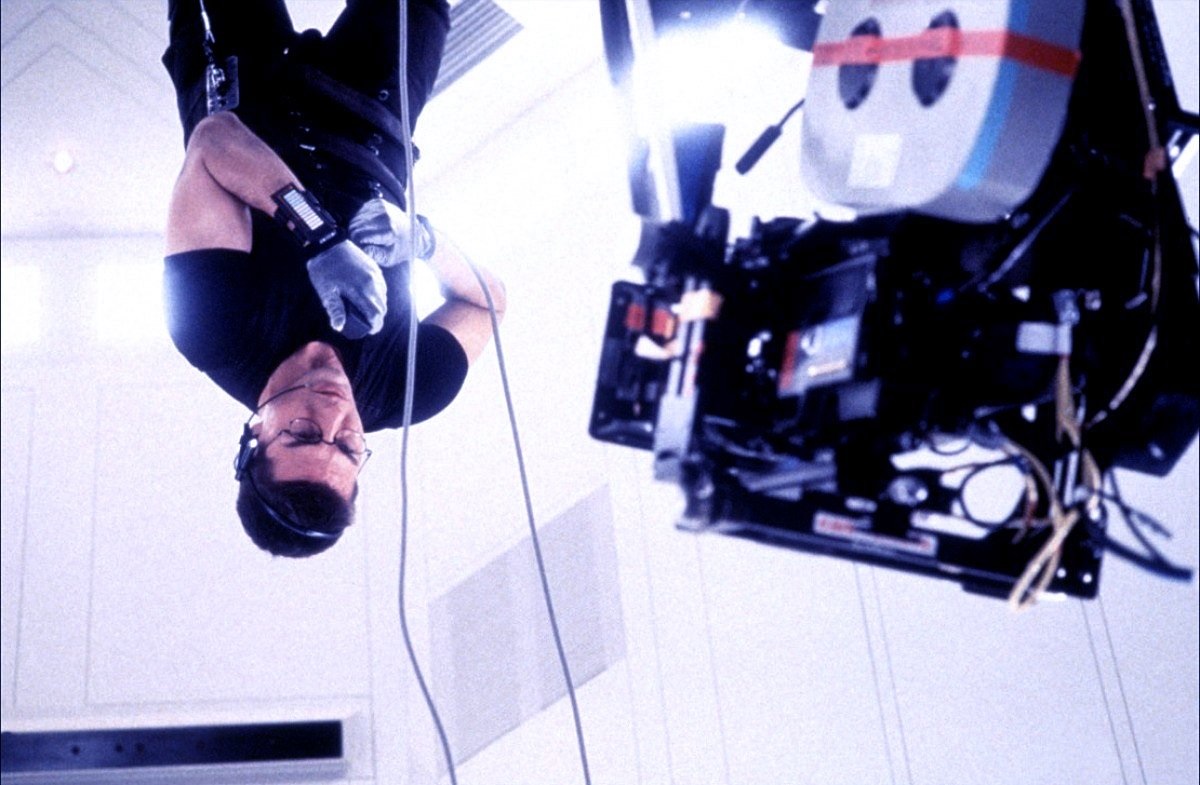
On working with production designer Norman Reynolds, and evoking three moods, "old Europe, America, and new Europe" --
Like an IMF mission, the production of the film was a race against time, shooting on location in Prague and London, and on sets built within the vast Pinewood Studios soundstages. However, the film's British production designer, Norman Reynolds, notes that the film's European locales merely enhance its essential spirit. "Mission: Impossible is an American action film, in the best sense of the term," he says.Reynolds, who earned two Oscars for his memorable design work on Star Wars and Raiders of the Lost Ark, is well-positioned to comment on the relationship between the production designer and the cinematographer. “The designer [helps to set] the picture's tone in visual terms. Now that's apart from the cameraman, who obviously has the ultimate control in that area, because he can make it dark, light, colored or whatever. So what we designers do is very much in the hands of cameramen. I certainly stay in touch with the cameraman as much as I possibly can.
“While we were in Prague, Steve was obviously very involved in location scouting and preparing things, so there were times when he and I were separated. But when we moved to the studio, I involved Steve as much as possible in the set design. It was quite selfish really, because the easier I made Steve's job, the better the film was going to look. We liked working together, and that's really the name of the game."
In planning their visual design, Burum and Reynolds referred solely to the script and not at all to the television series. In fact, Burum confesses to having never really watched the TV show. "I remember a little from college, but I never got a chance to see an entire episode," he admits.
Following the natural divisions of the script, Burum created a different lighting approach for the missions in Prague, Virginia, and on the TGV train, producing a visual diversity and rhythm that enriches the film. The cinematographer summarizes the three moods he sought to evoke as "old Europe, America and new Europe."
In Prague, Burum sought to create an atmosphere that evoked "the old European spymaster stuff. You know, the spymaster slinking around, dining in chic restaurants, smoking cigars and drinking brandy, while some Eurasian woman is wearing a tight silk dress with a mink dropping off her shoulder, with a Twenties bob hairdo — the Mata Hari thing. Here you are in Prague, which has just been freed from the Communists and is still mysterious, almost Oriental. Anything can happen, and of course, all kinds of nefarious devious stuff is going on because everyone is grappling for power, and everything is up for grabs."
In lieu of Mata Hari, Mission: Impossible features French actress Emmanuelle Béart as Claire, an IMF member and romantic interest of Hunt’s. To give Béart a "more ethereal" appearance, Burum chose his customary black silk stocking diffusion when shooting her close-ups. Onscreen, the diffusion is subtle and Béart's face still looks sharp. The cinematographer explains that "women, even when heavily diffused, don't appear diffused on film because their makeup accents their eyebrows, eyelashes and lips, which gives you a false sense of sharpness. For example, normal lip color blends in with the face but, with lipstick and liner, the lips look a lot sharper than they really are."
Most of the "old Europe" sequences in Prague take place at night. From the look of the film, the crew had the run of the Czech capital. The venerable but run-down Natural History Museum posed as the embassy's reception hall. Key exteriors were shot in Prague's two prime tourist spots: the beautiful square at the center of the old town and the famous Charles Bridge. These picturesque nightscapes required an excessive amount of light, since Mission was shot in the anamorphic format. For Burum, the lens T-stop setting is an essential factor in the quality of widescreen images.
"Many people ask me why my anamorphic shows look so sharp. It's because I know which stop to put the lenses at. You can't get an anamorphic lens below T4 and keep it sharp. In desperate situations, I have shot scenes at T2.8. I've been able to get away with it because I light very hard and very contrasty, which gives the images a phony sharpness. But if you try to light an anamorphic image at T2.8 with a soft light, the image will have no snap." Rawdon Hayne, Burum's 1st camera assistant, was instrumental in this endeavor.
Burum used Panavision's C-series anamorphic lenses, which he prefers to the E series because of their small size. "There's something about the older lens design that gives the appearance of a bit more depth of field. In point of fact, the term depth of field is baloney; there is only one point of absolute focus. Everything in front and everything behind is not really in focus, but rather seems to be in focus to your eye. If you have a lens that is ultra-sharp or heavily contrasted, then you see that difference in focus immediately. Older lenses are not quite as sharp, so they only appear to have more depth of field."

Read Burum detail much more in the article regarding lenses, lighting, old-fashioned process shots, etc., at American Cinematographer. One curious image included there is this one:

Apparently taken from the original magazine article, the image above includes the following caption:
Luther (Ving Rhames) on the train, sharing a frame with an unfocused Max (Vanessa Redgrave). Here, Burum accentuates the space between the characters, as Luther is undercover, secretly trailing Max.
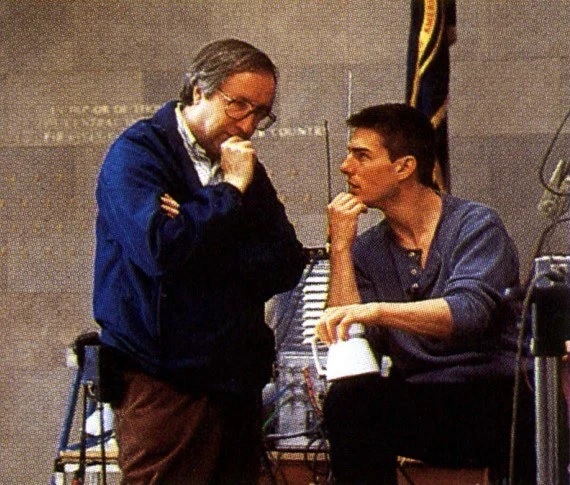
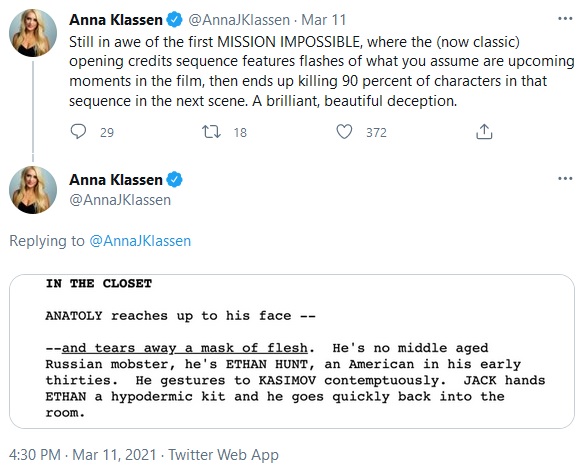
1. Embrace canted anglesOne of the most subtle things in this movie that I don't think a lot of other directors utilize are the canted or "Dutch" angles.
This is a spy thriller, so it's the perfect genre to mess with the camera angle to make the audience feel worried and uneasy. De Palma does this all with a graceful touch.
When it comes time to do your movie, think about shaking up the camera angles from the boring norm.
2. Set pieces must be memorable
One of the best things about the first Mission: Impossible is that it set the standard for set pieces. From the opening mask switch to the break-in at the CIA, these set pieces were all perfect trailer moments. I mean, Cruise hanging from the rafters is one of the indelible images in all of film history now.
When you set out to make your movie, think about how the set pieces stand out. As the story goes, Paramount wanted more of a talky spy movie, but Cruise and De Palma said that the only way the public would embrace it is if the set pieces wowed everyone.
They were right.
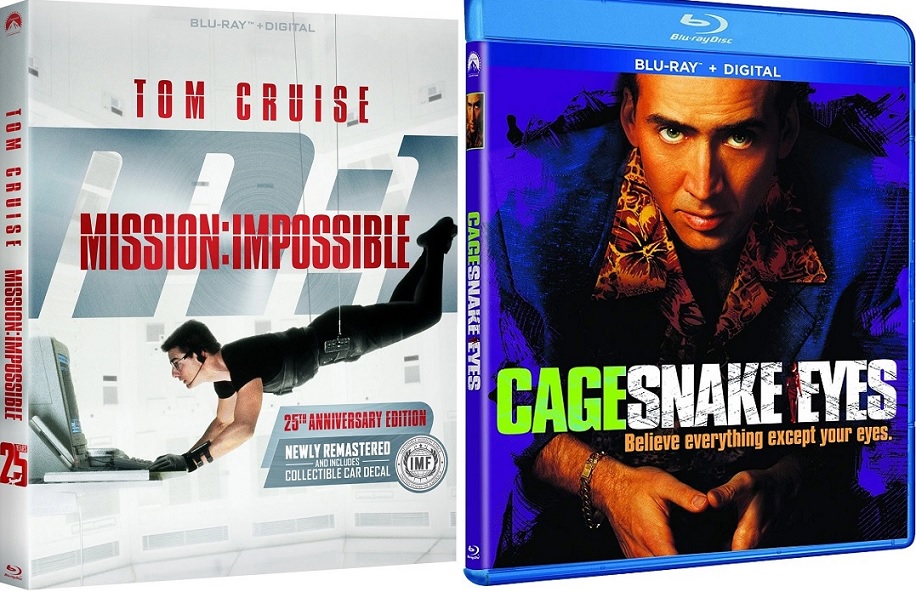
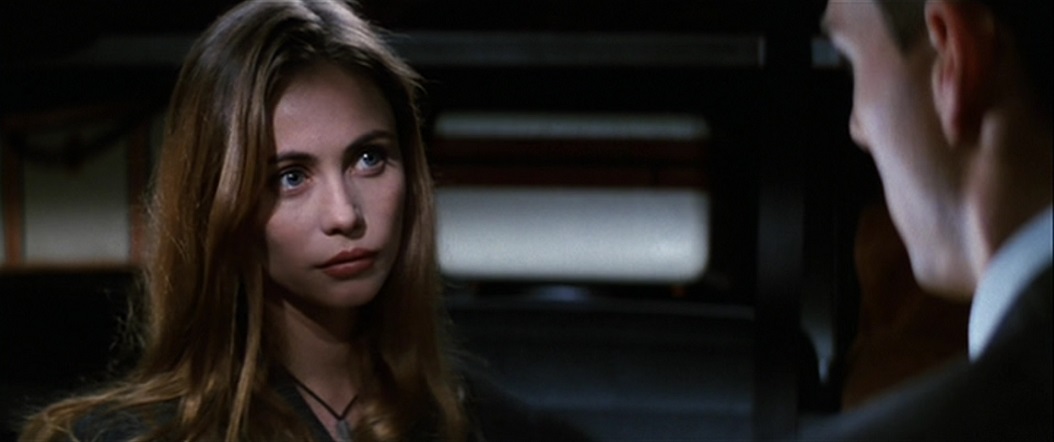
Though it isn’t really until 2015’s Rogue Nation that Mission: Impossible directly begins to question the validity of the IMF in the modern day—much like Skyfall does with the 00 section—De Palma lays the foundations of exploring whether a concept so rooted in the Cold War showmanship, theatrics and game theory as Mission: Impossible can even exist in a world that doesn’t need it. Rogue Nation’s answer, further underlined in Fallout (which more than any of the previous films attempts to capture some of the essence of De Palma’s movie, even if aesthetically it has more in common with Christopher Nolan), is that the IMF *is* still relevant, but for one reason, and it’s the same reason as with the 00 section: in that franchise’s case, it’s James Bond. In Mission: Impossible’s case, it is Ethan Hunt.Mission: Impossible does not sell Ethan, however, as a Bond proxy. Cruise’s charm is perfectly evident but Ethan is not a seductive, one-man killing machine, or indeed the death-defying nihilist he becomes post-MI:3. Ethan here is a touch more enigmatic and distant, which befits the colder stylings of De Palma’s approach to the material. His lens channels Hitchcock while imbuing the frame with a distinctly De Palma-level of paranoia. Behind the 90’s action beats and slicker dynamic, there remains a visible 70s conspiracy aspect to Mission: Impossible which is missing from subsequent pictures. It’s as if De Palma didn’t believe in the 60’s show, or didn’t believe it could exist beyond the 60s, and intentionally tries to revive the property within a post-70s culture, one where spooks like Kittredge reflect a government far more willing to sacrifice the lives of spies such as the IMF as part of a bigger, self-interested picture.
You only have to look at the strange character of Claire Phelps to see how Mission: Impossible doesn’t follow a traditional narrative pattern, particularly for a character like Ethan. MI:2, in trying to recast him as an American folk hero spy, immediately gives him ‘the love interest’ who you know will be disposable by the end of the picture (which turns out to be the case), but De Palma never tips Ethan and Claire into any kind of conventional romance. There is sexual chemistry and clear frisson, which almost enters into sexually aggressive territory at one point, but there is only the suggestion that Ethan and Claire may have slept together, and that Ethan may have compromised his own morals in doing so. Yet, in much the way Ethan becomes a tactical master three steps ahead of his enemies, sleeping with Claire may have been part of his plan all along, when ostensibly it seems to be part of Phelps’.
Claire, played by beguiling French beauty Emmanuelle Beart, is a strangely inert character. She is a spy yet does not seem to have any real agency about her. She is married to Jim yet this almost feels like a technicality, given we see almost no sign of warmth or connection between them. She might or might not have been complicit in murdering the IMF team; during the beautifully executed scene in which Phelps reveals his guilt to the audience yet not directly to Ethan, but which can equally be read as Ethan figuring out that Phelps is Job, Ethan actively imagines and then discounts Claire as the one who blew up team member Hannah’s car. If Ethan does have feelings for Claire, this could be his way of refusing to countenance she could be a traitor\killer, and him trying to protect her, but De Palma keeps it ambiguous. We never quite know for sure, come the end, if Claire was always just in it for the money like her husband. She is also never really defined as a rounded character in her own right.
Phelps certainly seems to believe Ethan slept with his wife and made that connection, given how in their final confrontation he quotes the Bible and the well-known passage: “thou shalt not covet thy neighbour’s wife.” This plays into the odd level of religious symbolism which underlines Phelps’ extremism; he presents himself to Max as Job 3:14, which the CIA believe is code for an operation but Ethan figures out is the following Biblical passage: “with kings and counsellors of the earth, who built for themselves places now lying in ruins.”
This suggests Phelps is or was a religious man (and given Voight’s own personal leanings, very possibly a conservative), particularly in how he seems to be using Christian scripture to justify the betrayal of his nation. ‘Building for themselves’ references his own attempts to become a mercenary and profit over the deaths of many of his fellow spies still protecting their country, while the ‘places now lying in ruins’ could be how Phelps considers America: a country he does not recognise following the end of a career-defining hostility. There is a fundamentalist extremism at play here which, oddly, presages how certain Middle Eastern organisations would twist Islam to fit their own self-aggrandising interpretations as we entered the next decade.
Oddly, though, Redgrave’s Max tells Ethan, when posing as Job, that “Job is not given to quoting scripture in his communications” after Ethan does just that, suggesting Phelps is a false prophet. He doesn’t really know or understand the Bible and it could just be another example of his warped psyche when it comes to America as a nation – using the Christian belief system which underpins the land of the free against it. De Palma doesn’t take these religious notions too much further but McQuarrie certainly revisits them twenty years later in Fallout; Ethan again poses as a terrorist underpinned by quasi-religious doctrine when making deals with Max’s daughter, no less. This is no doubt an intentional homage to the first film but it does show how Mission: Impossible casts a long shadow across the rest of its own franchise.
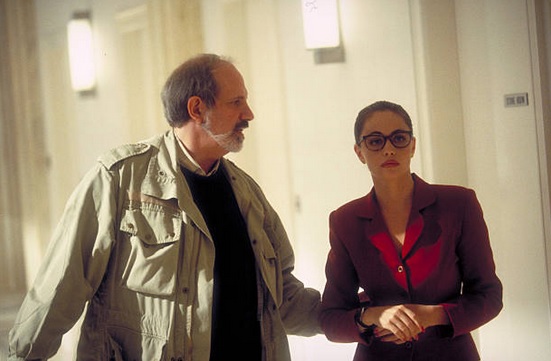
Richard Peña: In addition to working with artists like Téchiné, Sautet, Rivette, Assayas, and others, you also have worked in Hollywood. Specifically on Mission: Impossible. And I'm wondering if you could talk about what your impression was when you arrived to be in a very big-budget Hollywood film, and then maybe on that, what was it like to work with another auteur like Brian De Palma?Emmanuelle Béart: [via a French-English translator] Well, it was quite a strange experience for me. I must say that I got on this project, while I was RAISED in auteur cinema, so I had as an actor, a culture, habits of the background that I had, and the kinds of films in which I had been in. And all of a sudden, I got there, and I think Brian once told me, when it was the premiere of the film, he told me that he felt the same. That it was, when we were on set, the boss wasn't Brian De Palma. It was Tom Cruise and his team. That's what it was about. And this is something I really found hard to adjust to. I mean, for me, the director is the absolute master. He's the master and commander of the boat, of the set. And I expected this to be the same there, especially with a director as great as Brian De Palma. But it wasn't like that at all. And, it wasn't the problem of Tom Cruise, who I really got along well. And I think, for him, it was okay, it was the way it had to be, but it wasn't MY culture. It wasn't my way of engaging in a film project. So, that was quite strange.
And I was... a bit, also, I found incredible, the amount of money that was being used for ONE film. I was wondering all the time, I was obsessed with the idea of how many auteur films in France could be made with this money. Why are we putting so much money on ONE film? And when we were really too depressed, Brian and I, I remember, we would go in the evening into Italian restaurants, eat pasta, and talk about films, and talk about auteur cinema. And we had great fun, the two of us together, after, once the shooting would wrap, to go and enjoy our time together.
But for the film itself, I have mixed feelings, I would say. From one side I was like a kid. I found it funny, so, so much money, and to be able to just push a button and see a car explode. And this was a bit crazy. But at the same time, I felt quite embarrassed and not really at the place I wanted to be. That's why afterwards, I didn't stay in Los Angeles. I had an agent, I had many more offers, but they didn't make sense to me. It was too stereotyped. It was just a kind of, um, what's expected from a French actress, and really too similar to what I'd done before, and so I couldn't relate to any of these offers. And I just longed to go back home.
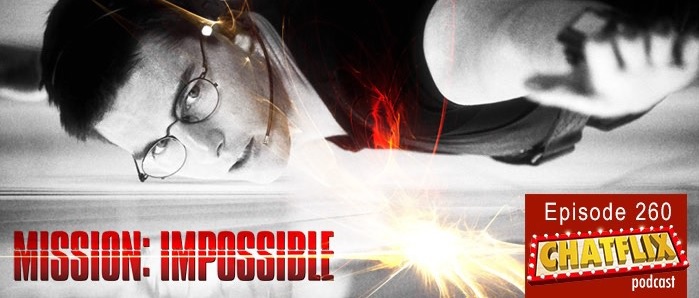
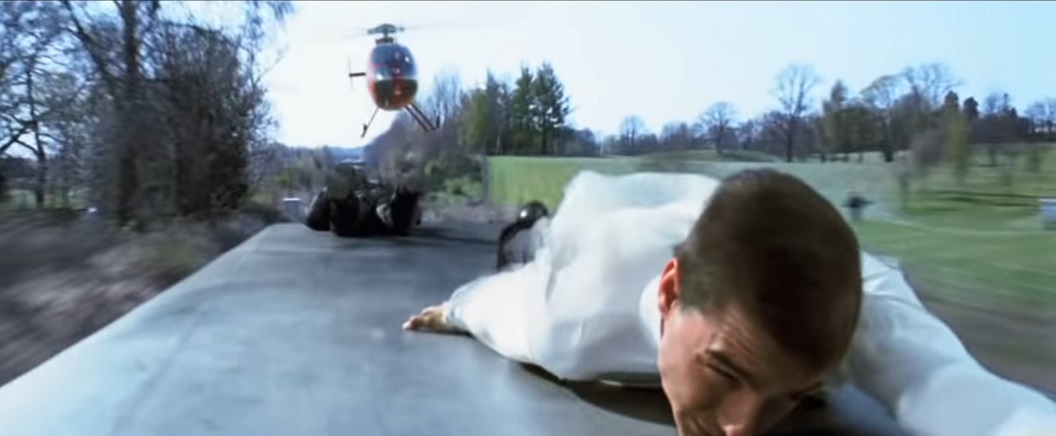
This week we are joined by bestselling novelist Matthew Pearl (“The Dante Club,” “The Poe Shadow”) and we talk about his research into Eliot Ness and the connection he made between “The Untouchables” Odessa steps sequence and the climax of the original “Mission: Impossible.” We discuss other connections between the films, go over some unused script pages, and Pearl brings up a fascinating “Mission: Impossible – Rogue Nation” mystery. Released January 15th, 2020.
However, as I dug around a bit looking for information about the Mission: Impossible train sequence, I found a Bold Entrance article about it that includes quotes from when visual effects supervisor John Knoll was on the Light The Fuse podcast last year, for three episodes...
I haven't listened to these episodes yet, but I plan to this week. In the meantime, here's an excerpt from the Bold Entrance article:
What Makes An Action Sequence Great?According to Cinelinx, Knoll and De Palma researched two of the great action films, Raiders of the Lost Ark and Terminator 2: Judgement Day, for inspiration. Sequences, such as Indiana Jones chasing the Nazi truck carrying the Ark and the truck pursuing John Connor through the canal in Raiders and T2 respectively, provided key insights into the structure of a great action sequence.
These sequences revealed that every element in a great action sequence is well choreographed together. Camera angles, camera movements, vehicle speed, music, the timing of the stunt to provide a suitable payoff for the audience, sound effects, and music all work in concert to turn a good action sequence into a great one. The placement of vehicles (in this case the helicopter and the train) also needed to favor the performance of the actors.
But unlike Raiders and T2, the majority of the train sequence is not shot on location and relied heavily on a soundstage, miniatures, and visual effects. Knoll and the rest of the crew at ILM had to bring their A-game to this sequence in order to bring a level of realism that made the on-location footage indistinguishable from the effects and soundstage footage.
While Knoll and his team created the most realistic effects possible, De Palma decided to limit the use of music for the first few minutes of the sequence to focus on sound effects. The sound of air rushing by at 200 mph helped set the tone for the sequence, and sell its realism. This directorial choice also helped build the scene up to its crescendo when Cruise finally jumps onto the helicopter’s landing skid and the familiar Mission: Impossible theme music emphasizes the climactic payoff.
From Storyboards to Animatics
To help choreograph these elements, Knoll initially worked with De Palma to storyboard the complex sequence. From his work on Star Trek: Generations (1995), Knoll recalled the limitations of storyboarding correct perspectives for complex FX elements in a shot. To solve this on Star Trek, Knoll had built simple CG models of a lot of the assets and did shot design in 3D “so then I’d know for sure that any shot I designed would be correct.”
Knoll soon found it necessary to follow a similar approach on Mission: Impossible.
“[When De Palma] wanted a list of all the camera focal lengths and positions, so there was no guessing on the stage, it seemed like the natural way to do that was to have a CG model of the train and helicopter, and layout those shots in perspective-correct 3D. I did a first pass on that and then, after I had done stills reproducing the storyboards, Brian requested running footage with animatics. This was just like a previs, and it worked tremendously in helping us make the sequence.”
Making the Outrageous Follow the Law of PhysicsMaking the bullet train sequence look good on paper and in animatics was quite different from making it look good in the final sequence. In fact, it was extremely difficult. According to Knoll, Cruise was involved in pre-production on Mission: Impossible, making sure that shots were staged in such a way that the audience knew he was really doing the stunt.
This also meant ILM needed to make sure the combination of live-action and effects didn’t make Cruise look silly. While the physics of the bullet train sequence gets more ridiculous as the scene progresses, Knoll knew it had to look right on screen to the audience. In a recent interview with Light The Fuse podcast, he said:
“Even if audiences can’t tell you what is technically wrong with a shot, if you don’t get the physics right, they can see that something looks wrong. They might not be able to say, ‘Oh well it’s because that object isn’t following a ballistics trajectory.’ It looks wrong to them. So I think it’s always important for us to do our homework, and try and enforce as much scientific rigor on the work that we’re doing as is appropriate. Obviously we do a lot of fantasy things that are theoretically impossible, but I always try to [think], ‘Well if this were real, if there were some mechanism behind it, what would that look like? And I try and let that drive the work.”
Knoll added that even he had misgivings about some of De Palma’s requests for the sequence:“I do remember there was a moment where we’re obviously putting Ethan into a lot of peril in that train sequence and there’s a moment where he’s hanging off the side of the train, and there’s another train coming, and he’s about to get scraped off the side of the train. And Brian wanted Tom to be hanging on the side of the train and then sort of tipped up completely horizontal [even though in normal physics] the drag and the wind would have been pulling him sideways. And I was trying to explain, ‘Well I think he should be at a bit of an angle because if you think about the vector math here, the gravity’s pulling him this way, and then the air drag is pushing him this way. You wouldn’t get completely horizontal.’ And Brian didn’t have a lot of patience for that kind of stuff. He said, ‘We’re making a movie. This is not a physics lesson. Get a life.'”
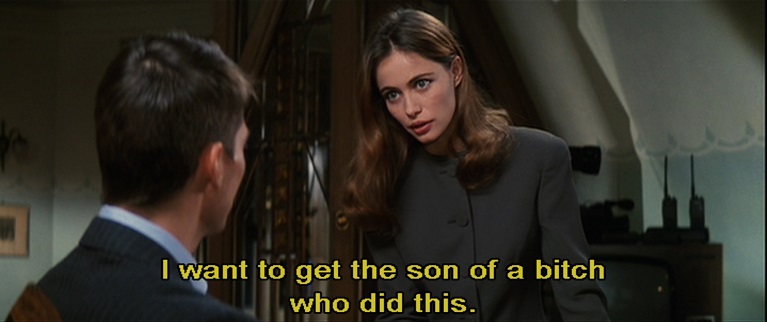
In that meeting, we see a variation of the meeting in Body Double between Jake Scully and Sam Bouchard in the bar, which itself is a variation of the date between Jon and Judy in Hi, Mom!. In each of those previous scenes, a person (Jon in Hi, Mom! and Sam in Body Double) is attempting to manipulate the person they are speaking with through lies and improvisation.
In the case of Mission: Impossible, however, Ethan is not so easily duped, and Jim Phelps knows it. In fact, as much as Jim works from his own script that Kittridge was the mole, he watches Ethan intently to see if he is buying it. Ethan is also watching intently, because as soon as Jim Phelps tries to tell him that Kittridge is the mole, Ethan knows that none of it adds up. In his mind, he plays out the only scenario that seems to make sense, even is acting for Jim as if he believes his lie about Kittridge.
Martin Scorsese had a very similar dynamic in play in his 1991 remake of Cape Fear, a discussion that is punctuated by a hilarious cut to Nick Nolte forced to sleep on the couch. And to bring it all back home, the son-of-a-bitch being discussed in the Scorsese film is Robert De Niro. See it all below:
